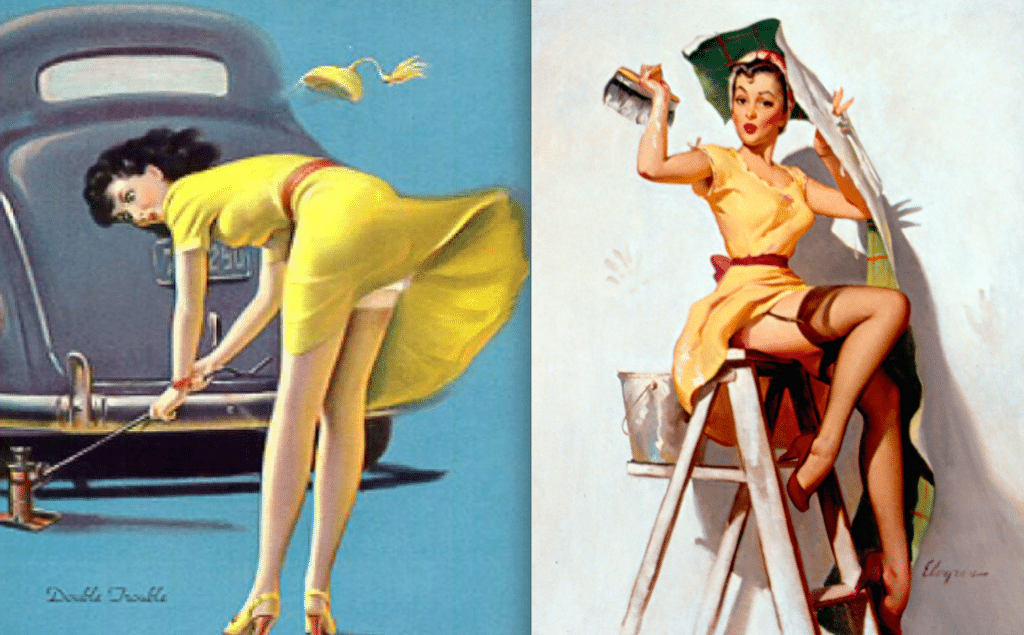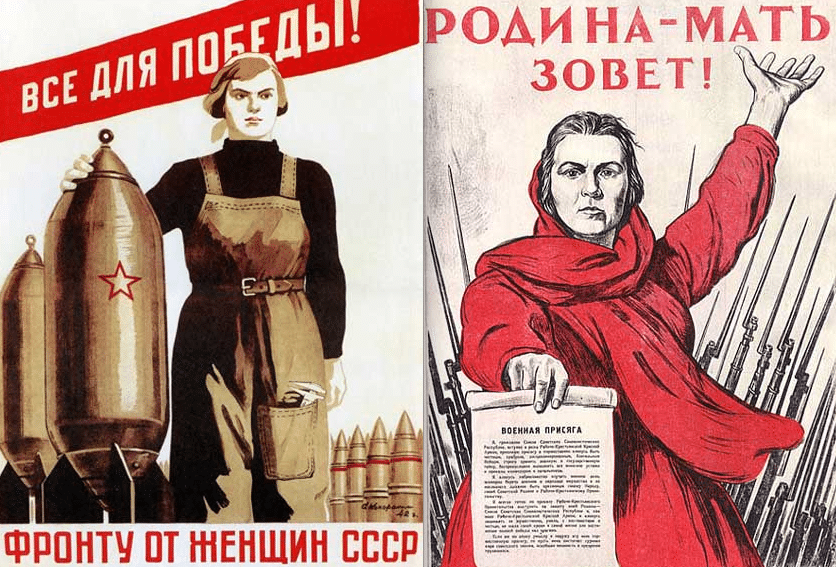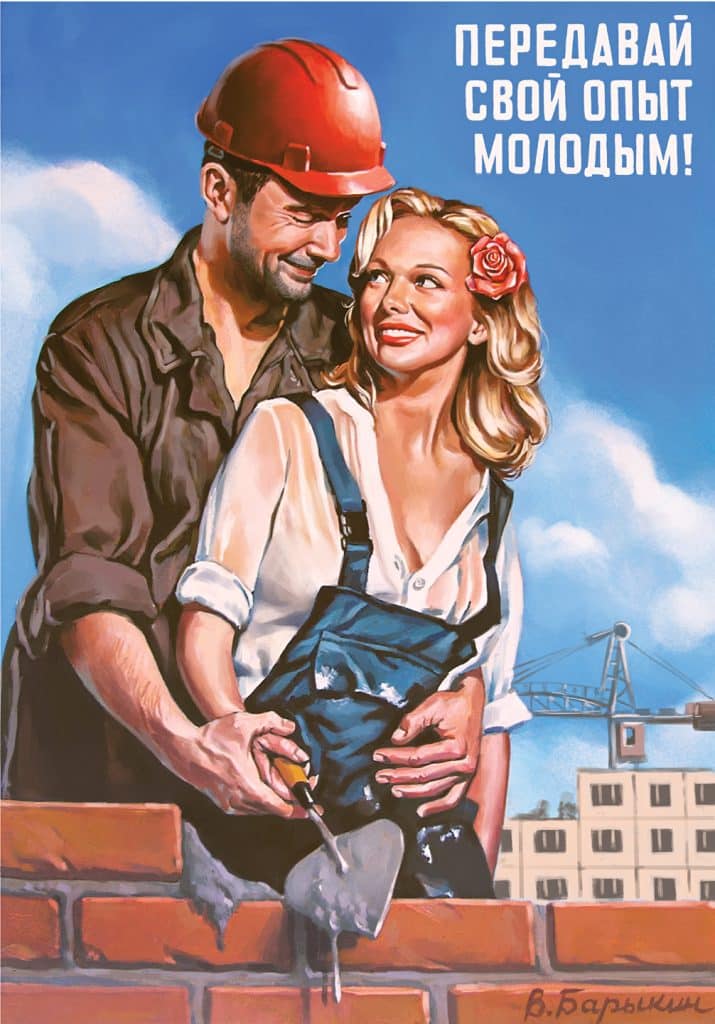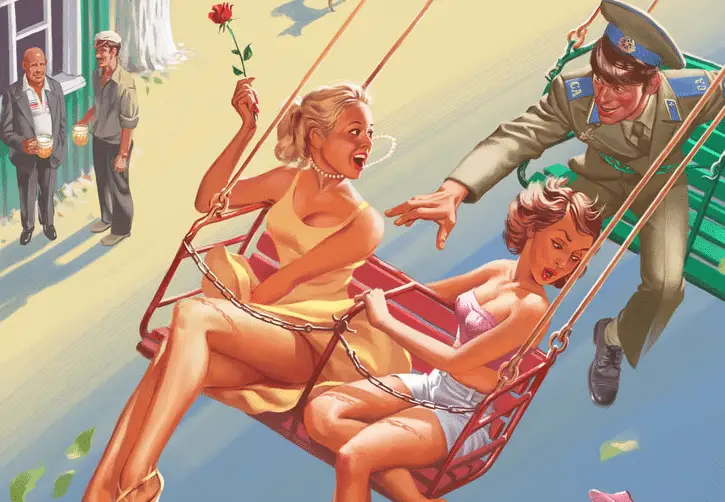“There is no sex in the Soviet Union!”
So declared one Soviet woman in 1986, responding to an American woman who had asked about comparative sexual openness in the States and USSR during a segment on a TV show hosted by Russian-American journalist Vladimir Pozner. Though misquoted – the woman actually responded, “There is no sex in the Soviet Union on television,” the phrase caught on and was slapped on buttons and stickers for sale in the Soviet Union, drawing a line in the sand between Soviet values of sexual conservatism and a more liberal, unapologetic sexual openness in the capitalist West.

That was in the late 1980s. But even going back more than 40 years to the time of the Second World War, sexuality in America was still comparatively more open, though completely tame relative to today. Take for example the pin-up— an art form with its heyday in the 1940s, though seeing 21st century resurgence. Seen splashed across magazines and postcards, these sultry illustrations featured women in various states of undress and were meant to boost the morale of American soldiers at war. These illustrations of voluptuous women — schoolteachers in skirts with exposed garters, cowgirls perched upon fences in short skirts and high boots – were sexy but subtle, almost innocent.

And while pin-ups are not a uniquely American art form, nor was their time relegated just to the 1940s, the works created during the time of the Second World War were in stark contrast to morale-boosting posters being designed across the world in the USSR.
If you look at wartime Soviet propaganda poster, you’ll find women, too – but they won’t be exposing their stockings or wearing heels with bathing suits. It’s a very different portrayal. A few select posters show women nearly covered head to toe in scarves, overalls, even turtlenecks. There’s also a noticeable lack of the coy female sexuality seen in American pinups. Instead of beautiful but bumbling women fumbling to lay wallpaper or fix a flat, women in Soviet posters present oaths of allegiance to the USSR amongst a background of drawn weapons, guard over missiles in workman’s clothes, and are made to look strong and serious. As sexuality was an ultimate taboo in the USSR, the thought of boosting morale and nationalism with a Soviet answer to the pinup was all but unthinkable.
That is, until contemporary artist and illustrator Valery Barykin decided to join together the two seemingly ideologically incompatible art forms. Enter the “Soviet pin-up.”
The 47-year-old, Nizhny Novgorod-based artist draws his pinups digitally, though the images are made to look like the classic paintings. Take “Young Foreman on the Plot,” depicting a hardworking foreman getting suited for the job, though the “young foreman” in question is a woman pulling the shapeless blue jumpsuit over lingerie. According to academic Laura Engelstein, lingerie like the black lace bodice depicted wasn’t even widely available in the Soviet Union during the 1940s, and only gained prominence much later.

In this way, elements of both the American and Soviet art forms are visible. The coy Western sexuality mixed with a nod to the Soviet value on work and occupation are both present in this artistic hybrid.
The same can be seen in “Give Your Experience to the Young,” depicting a gruff workman helping a pretty young woman in overalls learn how to lay bricks. The caption could also be a reference to those that accompanied American pinups, which often lent themselves to double meanings.
Аnother depicts two young girls being pursued by a uniformed military men. One looks positively American in denim short shorts and a strapless cropped top, while her companion wears a yellow sundress, with the tail blowing back in the wind – reminiscent of later pinup stars like Marilyn Monroe.
But Barykin doesn’t limit himself to recreating and reimaging pinups. He also creates digital illustrations of retro-inspired advertisements and slices of life, from dancing, university life, and Soviet communal apartment living. You can view a portfolio of his illustrations here.
Sources: Laura Engelstein: “There Is Sex in Russia–And Always Was: Some Recent Contributions to Russian Erotica”







